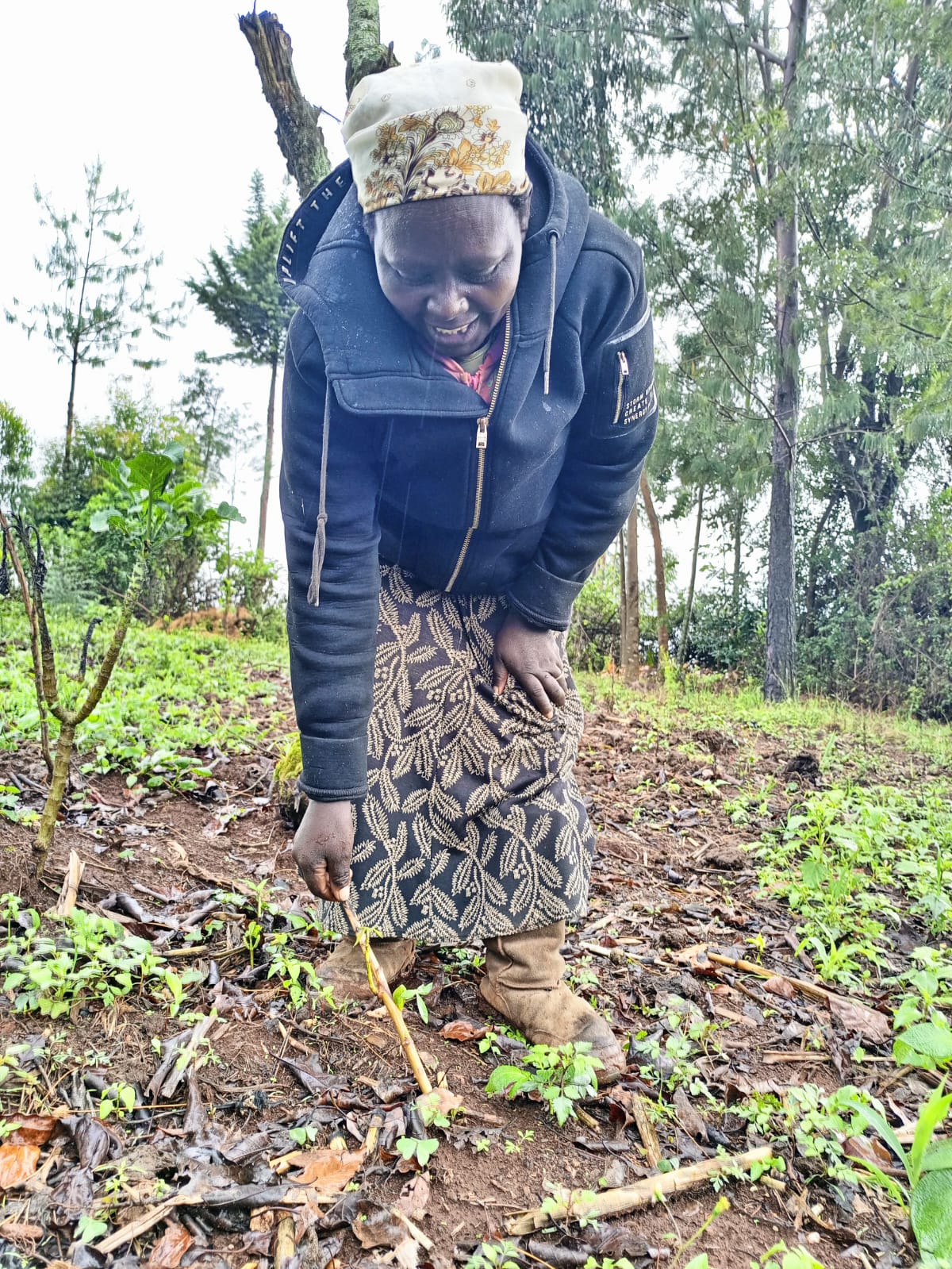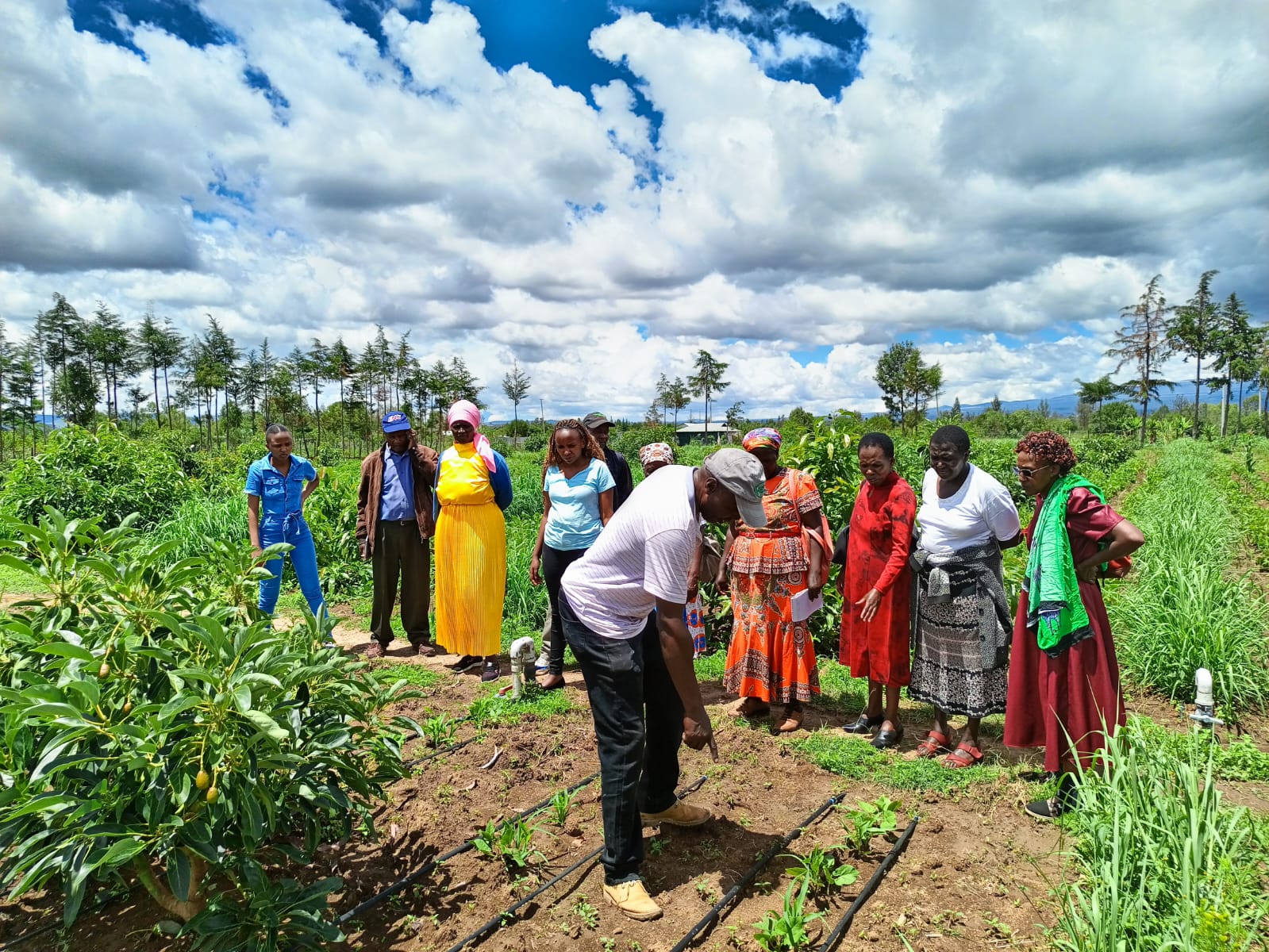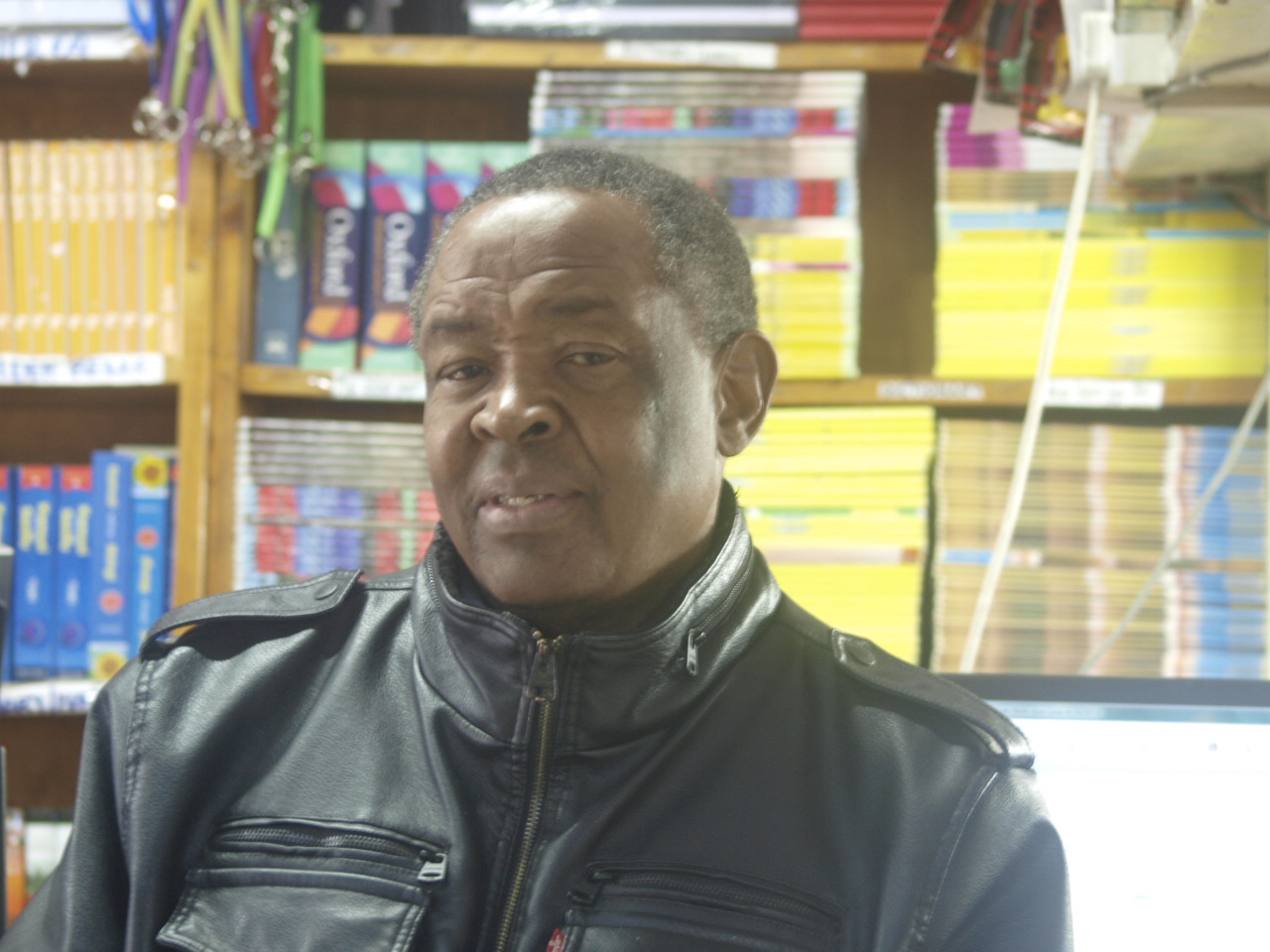For the past six years, Priscilla Mwihaki has seen her corn harvests plummet.
Gone are the days when they would harvest a bountiful 30 90-kilogram bags per acre in Mairo Inya in Nyandarua County, Kenya.
Today, even the most productive shareholding barely produces 10 bags of corn per acre in a season.

“Last year, I harvested only two bags from my one-and-a-half acre piece of land,” Priscilla told AfS.
“We used to fill our granaries with corn, but nowadays the crop does very poorly.”
The seasons have also changed in the Mairo Inya area and rainfall is erratic, Priscilla said.
Smallholder farmers are responsible for more than 70 percent of Kenya’s total agricultural production.
But the most poignant pointer of climate change and its impacts came when her avocado seedlings withered following a prolonged dry spell, which the 55-year-old found rather unusual.
Novel techniques to help farmers
Smallholder farmers like Priscilla play an important role in Kenya’s food security matrix, given that they are responsible for more than 70 percent of the country’s total agricultural production.
The agricultural sector has however suffered losses due to the effects of climate change in recent years, which calls for novel measures to help farmers produce optimally.
The institute encourages farmers to adopt climate-smart agriculture techniques by constructing water pans, shade nets, and water pumps.
Hope Valley Family Institute (HVFI), an organization based in the Kenyan town of Nyahururu, has marshaled smallholder farmers like Priscilla towards climate resilience.
HVFI addresses water management and climate-smart agriculture for 750 smallholder farmers in the Laikipia and Nyandarua counties of Kenya.
With help from the GIZ-supported IKI Small Grants project, HVFI supports farmers to adopt climate-smart agriculture techniques by constructing water pans, shade nets, and water pumps.

The farmers are also guided for two years in climate-smart agriculture through training.
This includes field visits to give them hands-on experience in successful climate-smart agriculture projects.
The institute is also keen on empowering local communities by helping them shift from a culture of dependence on food aid.
The training covers a wide range of inter lapping subjects, such as solar energy, disaster risk reduction, indigenous plants, and livestock breeds.
HVFI is also keen on empowering the local communities by helping them shift from a culture of dependence on food aid.
The situation was particularly dire due to the disruptions caused by the Covid-19 pandemic.

“The pandemic made us think more broadly about our relief program,” said Jane Thuku, the HVFI administrator.
“We thought of empowering farmers to have sustainable food sources. We have a food aid program, but it isn’t sustainable in the long run.”
Planting pest-resistant crops
HVFI’s transition from food aid to food production is in line with AfS’s Relief2Resilience campaign.
The campaign encourages problem-solving and shifts focus from relief as a tool for development, to working towards resilience by harnessing the capacities of communities and helping them deliver sustainable outcomes.
Through the mentorship of HVFI, Priscilla has taken to farming pest-resistant cassava and sweet potatoes.
She also intends to construct a water pan and start harvesting water, but she is short of funds.

“We encourage farmers to harvest water for irrigation, particularly in the dry parts of the counties we serve,” said Bernard Ngamau, the executive director of HVFI.
“We also train them to plant trees. That way, we are mitigating the effects of climate change while also boosting food security.”
All is not lost
Having scrutinized figures showing the country’s dwindling forest cover — which had decreased to 7.4 percent in 2019 — Ngamau devised a strategy for increasing tree cover by involving smallholder farmers.
He started encouraging the farmers to plant fruit trees such as avocados.
Priscilla knows it is almost impossible to undo the damage caused by climate change and revert to the good old days of bountiful harvests.
But all is not lost.
She now knows that by applying the techniques of climate adaptation and mitigation, she can still produce enough food to feed her family and have a surplus to sell.
